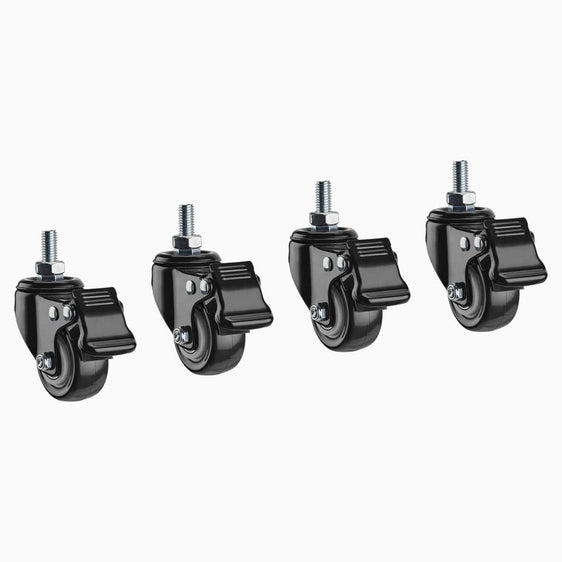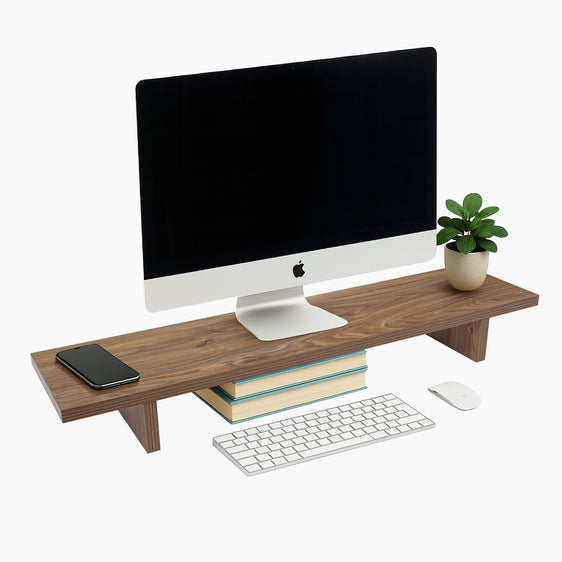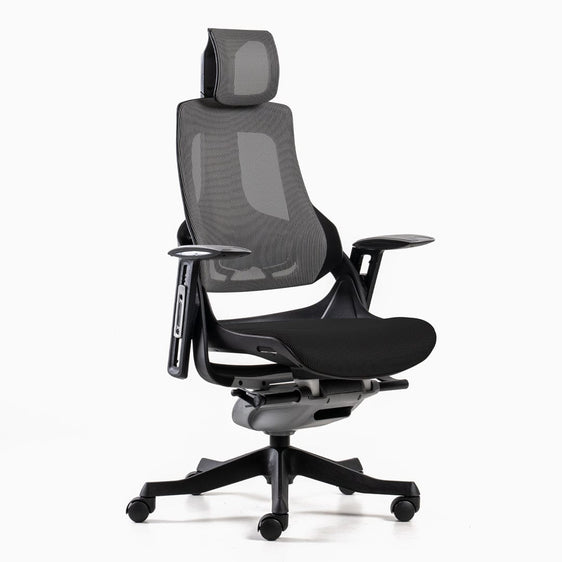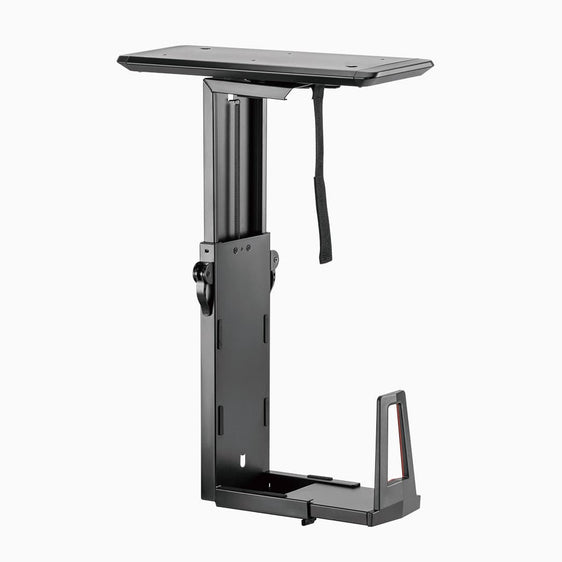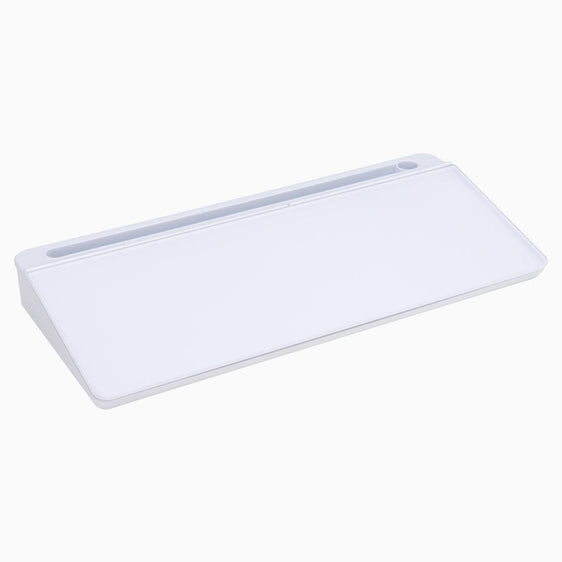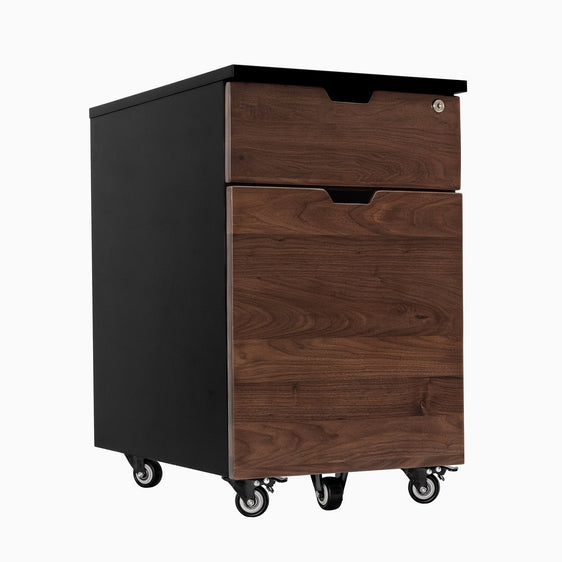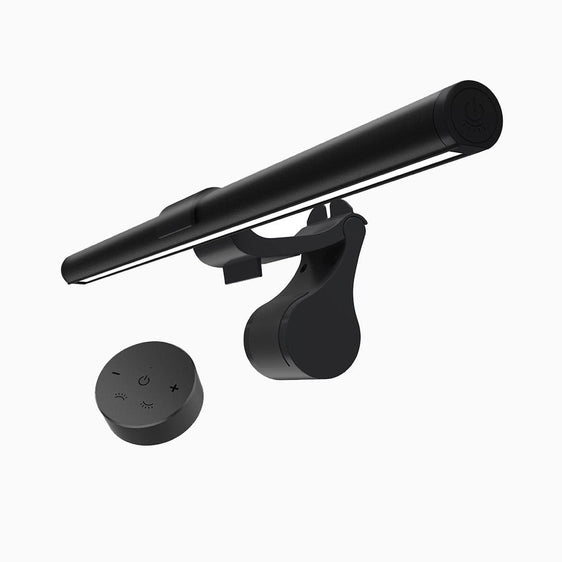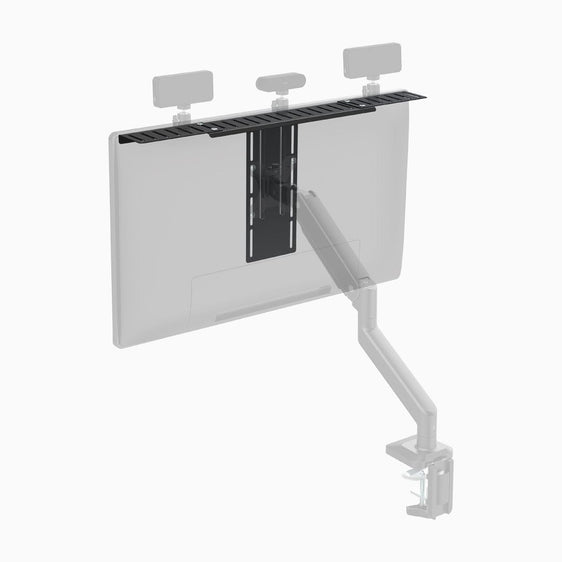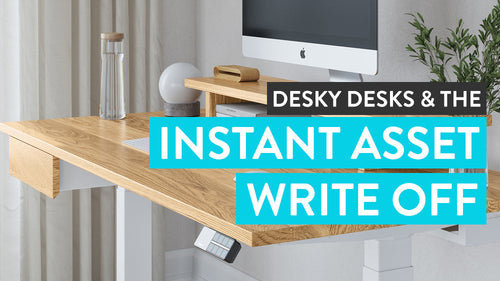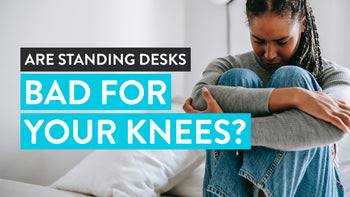
News
Are Standing Desks Bad For Your Knees?
Hayden AdamsMany of us have seen that sitting for long periods isn’t good for our health. To help solve this, several desk manufacturers make standing desks that are meant to prevent some of these health issues, including knee pain.
However, can a height adjustable standing desk end up being bad for your knees? What if you have already experienced pain in your knees? Let’s take a look at what a standing desk can do for your knees and what you can do to keep one of these tools from hurting your knees rather than helping them.
Is A Standing Desk Good For Your Knees?
Many of us that work at a desk have heard that sitting all day is unhealthy. Several health organizations have gone over the mechanics of how this happens and why workers should try to avoid sitting as much as possible. Still, it’s important to look at individual circumstances before making a blanket statement for everyone.
On average, an individual should try to avoid sitting for long periods. Because of this, a standing desk can help prevent some of these issues by keeping the pressure of gravity off your back muscles and spreading it out to the rest of your body. Our bodies evolved to handle an upright posture, so it’s no surprise that standing is better for our body’s health than sitting.
However, individual circumstances can heavily sway this trend. For example, workers that have weakened or ongoing knee issues might find that standing all day makes these issues worse. Worn-down cartilage in the knee can make standing for a while difficult as the bones of the legs rub together.
Overall, the best practice to take when determining whether to favour standing or sitting at work is to talk to your doctor. A healthcare professional is better at making these sorts of calls because they have both the education and your health information to consider for this decision.
Is Standing Better Than Sitting For Knee Pain?

Knee pain can come from several different sources. Overuse, cartilage degradation, and many other afflictions can cause pain to radiate out from your knee. But, the source of pain in your knee can tell you whether or not you should be standing or sitting to recuperate.
For example, most office workers who experience knee pain will find that it comes from a combination of poor posture and lack of exercise. If you don’t exercise your body, the tendons and muscles in your knee can grow weak over time. If this goes on long enough, something as simple as poor posture can cause pain by placing force on these weaker structures.
On the other hand, standing for too long can put pressure on the cartilage of your knees. Over time, this pressure, combined with heavy lifting or movement, can wear out the cartilage. As this pain grows, sitting would be the better option since it would give your body a chance to recuperate.
The shift to a sedentary lifestyle for most Western workers means that issues related to sitting for too long or age are the likely culprits for knee pain. For those seated the entire day, some exercise or standing breaks can help reduce some of this fatigue or pain by stretching and working the structures in your knee.
Again, the best practice to take in figuring this out is to talk to your doctor. Different ailments can have the same symptoms, meaning that sitting may not be the issue for your knee pain. Individual circumstances always trump overall trends.
Can Standing Desks Be Bad For You?
Yes, standing desks can be bad for you if you are using them the wrong way. If you use standing desks the wrong way, then a standing desk can be worse than a sitting desk for you and cause issues with your back and knees. The main factor here is the ergonomics of the standing desk and whether you are maintaining good posture while sitting and standing at your desk.
When standing at your desk, you should be able to have your elbows at your side when typing. Your elbows should be at a ninety-degree angle without tensing the muscles in your arms or shoulders. Also, your wrists should hover above the keyboard without having to reach or stretch to get to anything. See our guide on using your standing desk correctly.
Is Standing Too Much Bad For Knees?
Yes, being in a standing position for too long can be bad for your knees. If you don’t take breaks from standing often or continue working despite ongoing knee pain, you might be doing damage to your knee and related structures in your body.
For example, your knees have a flexible tissue inside of them called cartilage. This structure acts as a pad between the bones in your legs that keeps them from rubbing together. Over time, this cartilage can wear down, especially with overuse, and if it gets worn out entirely, the bones of the knee rub together and cause pain.
By ignoring this pain in the bones, the pain will persist and hamper your ability to work. It can also cause the degradation of other tissues in the knee. So, as with many things in life, a balance between standing and sitting is the key.
Why Do My Knees Hurt After Standing A Lot?
Persistent agony in your knees after substantial standing could stem from one of two causes: repetitive strain injuries (RSIs) or degenerative joint diseases.
RSIs occur as a result of repetitive tasks or awkward stances, putting undue stress on the knees. Over time, this causes a degenerative response, causing discomfort.
Degenerative joint disease, also known as osteoarthritis, comprises the wearing away of the cartilage, the cushioning layer of your knee joints, causing pain. Aging, obesity, and genetics are contributing factors to this condition.
Tips On Avoiding Knee Pain With Standing Desks
There are a few things you can do to avoid getting knee pain from your standing desk. If you follow some of these tips, you can reduce your chance of causing knee pain.

Set Your Standing Desk To The Correct Height
When setting the standing height for your stand-up desk, make sure that you have it set to the correct height. Much like with sitting desks, a standing desk needs to be set to the correct height to make the most of its ergonomic features. If you're unsure, check out our ergonomic desk height calculator.
When you’re standing at the desk, your elbows should be by your side and bent at a ninety-degree angle. Additionally, your wrists should be hovering over the bottom of the keyboard when you are in this position. You shouldn’t have to reach or strain to reach anything on your desk.
Stretch and Walk Regularly
Much like sitting, standing in one place for too long can put extended pressure on one portion of your body. It can cause knee and upper back pain and other health conditions if you do this for too long or too many days in a row. Try our article on combatting neck and shoulder pain with desk stretches if you're currently experiencing pain.
Walking away from your desk or stretching your legs can prevent some of these troubles. In addition to cutting down on your screen time, stretching helps move fatigue out of your muscles. It improves your blood flow, reduces weight gain, and flexes tendons. Keeping any part of your body from being in one position for too long is ideal.
Keep Your Posture Straight
Ultimately, the goal of good ergonomics is to enable healthy posture. When you keep your body in a slouched position for too long, it can lead to all of the health issues we think of from extended office work. Standing properly is critical.
Slouching or leaning back for a long period while at your standing desk is not good posture. Your head, neck, and back should be straight up with your shoulders relaxed. Adjust your computer monitor to match your height while standing. A monitor arm can help with the perfect height for your eye level.
Don’t angle your neck oddly as well to avoid neck pain. When using a standing desk, ensure your elbows are 90 degrees to the ground while using the mouse or keyboard.
{{ spec_single_monitor_arm }}Avoid Tight Clothes
While tight clothes can look great and feel good to wear when walking around, they might be affecting your body when at your desk. Tight clothes can encourage your body to adopt a posture or position that leads to poor ergonomics, causing fatigue and pain over time.
The easiest way to fix this problem is to avoid tight clothes. Otherwise, you can choose your outfits based on where your workday will take you. A day out traveling or walking would be good for these tighter outfits, while a looser outfit will help you stay relaxed and maintain good posture while at your desk.
Wear The Right Shoes
When standing, the force of gravity presses down on your feet. If you are wearing uncomfortable shoes, this force can cause foot pain, leading to fatigue and plantar fasciitis.
When using standing desks, padded insoles for your shoes can go a long way to avoiding this pain. Insoles that mold to the shape of your foot are even better since they help distribute force across the entire bottom surface of your foot.
Use An Anti-Fatigue Mat
In addition to the right shoes, the right mat can help improve your knee pain. Harder surfaces apply more force to your feet over time than softer ones, resulting in an increased chance of pain and tendon issues.
An anti-fatigue mat underneath you while standing can soften the floor you’ll stand on. This change can better distribute the force of gravity across your muscle groups, preventing one muscle group from taking too much fatigue.
{{ spec_anti_fatigue_mat }}
Take A Seat Every So Often
At the end of the day, standing desks are popular because of their ability to switch between a sitting and standing posture while working, which is ideal for for most people. It allows them to avoid staying in one position for too long, which is the primary cause of knee pain while standing. If you are sitting, be sure to use an ergonomic office chair to release pressure behind your knees.
If you don’t have a sit-stand desk, taking a walk or standing for a few minutes can help relax your body and prevent sitting fatigue from building up.
How Do You Stop Overuse Knee Pain?
Proactively addressing knee discomfort from overuse involves a balanced approach of resting, physical therapy, and careful activity modification.
- Light stretching routines help maintain mobility and flexibility.
- Strengthening exercises, particularly for the muscles around the knee, protect the joint from further stress
- Avoid activities that exacerbate the pain until a complete recovery is achieved.
- Use ice for pain and swelling control.
Are Standing Desks Worth It For Knee Pain?
Overall, standing desks aren't innately bad for knees. In fact, for many office workers and other sedentary members of the workforce, a standing desk could help offset some of the lifestyle issues caused by sitting all day.
To prevent any knee pain when using a standing desk, adding some padding to your shoes or floor can help spread out the force when standing across your entire foot, preventing health issues. Also, proper posture and placement of your arms and shoulders can keep you from adopting positions that put extra weight or pressure on your knees. Using standing desks has other health benefits as well - take a look at Desky's range of sit stand desks today and improve your health at the workplace!



